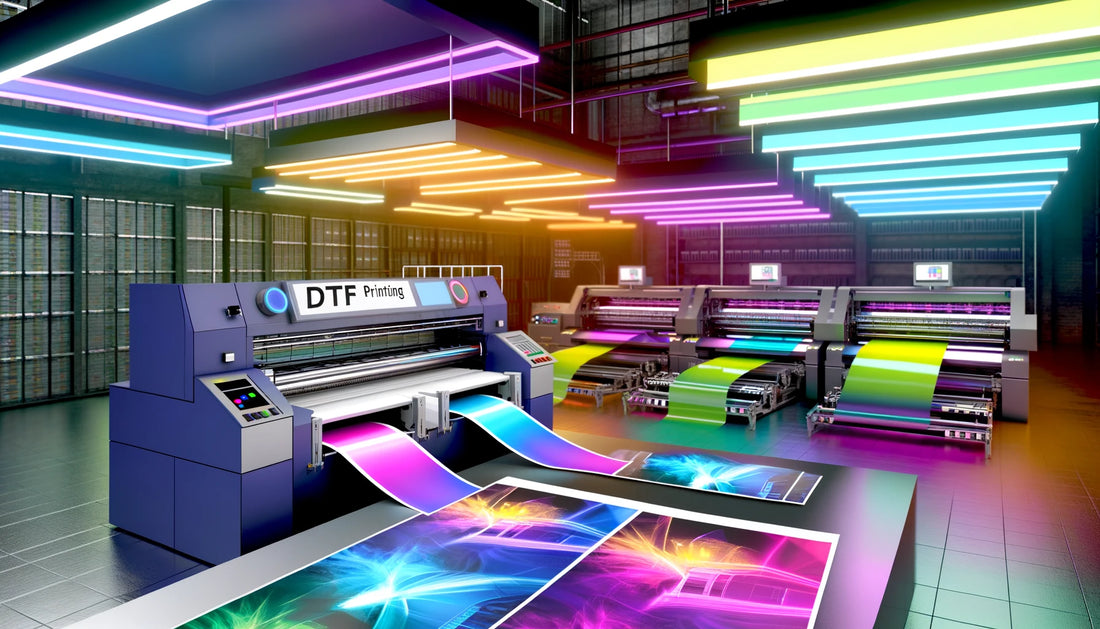Direct-to-Film (DTF) printing is rapidly becoming a favorite among custom apparel enthusiasts due to its ability to produce detailed, vibrant prints. However, achieving the best results with DTF printing heavily relies on the heat pressing process. This guide will walk you through everything you need to know about heat pressing for DTF printed products to ensure you get the most out of this innovative printing technique.
Understanding DTF Printing and Heat Pressing
DTF printing involves printing designs onto a special transfer film, which is then applied to the fabric using a heat press. The heat press is crucial in ensuring the design adheres properly to the garment, maintaining its vivid colors and durability.
Essential Tools and Materials
To get started with heat pressing DTF prints, you'll need the following tools and materials:
- DTF Transfer Film: The medium on which the design is printed.
- Heat Press Machine: A device that uses heat and pressure to transfer the design from the film to the fabric.
- Teflon Sheet or Parchment Paper: To protect the design and fabric during the heat press process.
- Garment or Fabric: The item you’ll be applying the design to.
Step-by-Step Heat Pressing Process
1. Prepare Your Design and Film
Before heat pressing, ensure your design is correctly printed on the DTF transfer film. Verify that the colors are accurate and the design is free from any defects.
2. Preheat the Heat Press
Set your heat press machine to the recommended temperature for DTF printing. This typically ranges between 320°F to 375°F (160°C to 190°C), depending on the type of fabric. Preheating the machine ensures even heat distribution.
3. Pre-Press the Garment
Place the garment on the heat press and perform a pre-press for about 5-10 seconds. This removes any moisture and wrinkles, providing a smooth surface for the transfer.
4. Position the DTF Film
Place the DTF transfer film onto the garment, ensuring the design is correctly positioned. Use heat-resistant tape if necessary to keep the film in place.
5. Apply the Teflon Sheet or Parchment Paper
Cover the transfer film and garment with a Teflon sheet or parchment paper. This step protects both the print and the fabric from direct heat.
6. Heat Press the Design
Close the heat press and apply firm pressure. The pressing time typically ranges from 15 to 30 seconds, depending on the specific requirements of your DTF film and fabric. Ensure even pressure is applied across the entire design.
7. Cool and Peel
After pressing, allow the garment to cool down for a few seconds. Then, carefully peel off the transfer film. If the design hasn’t fully adhered, reapply the film and press for a few more seconds.
Tips for Optimal Heat Pressing Results
- Consistent Pressure: Ensure the pressure applied by the heat press is consistent across the entire design. Uneven pressure can result in parts of the design not adhering correctly.
- Correct Temperature: Always use the recommended temperature for your specific DTF film and fabric type. Too high or too low temperatures can affect the quality and durability of the print.
- Clean Equipment: Regularly clean your heat press machine, particularly the platen, to remove any residue that could affect the transfer process.
- Experiment and Adjust: Different fabrics and DTF films may require slight adjustments in temperature, pressure, and pressing time. Don’t be afraid to experiment to find the perfect settings for your specific materials.
Common Mistakes to Avoid
- Overheating: Applying too much heat can cause the colors to fade and the print to crack.
- Under-Pressing: Insufficient pressure or pressing time can result in the design not adhering properly to the fabric.
- Ignoring Manufacturer Guidelines: Always follow the manufacturer’s instructions for both the DTF film and the heat press machine to avoid any issues.
Conclusion
Heat pressing is a critical step in the DTF printing process that requires careful attention to detail. By following the correct procedures and tips outlined in this guide, you can ensure that your DTF printed products are vibrant, durable, and professionally finished. With practice and precision, you’ll master the art of heat pressing, unlocking the full potential of DTF printing for your custom apparel projects.

